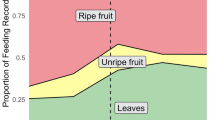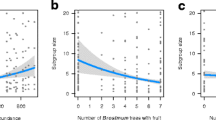As close relatives, chimpanzees (Pan troglodytes) and bonobos (Pan paniscus) share some important characteristics in their social structure. Both species form male philopatric unit-groups, with males remain in their natal group and females transfer between groups before they reach sexual maturity (Nishida 1979, Kano 1982, 1992, Goodall 1986, Wrangham 1986, 1987, Pusey and Packer 1987, Nishida et al. 1990, Furuichi 1989, 2006, Wallis 1997, Reynolds 2005). In addition, unit-groups of both species split into foraging parties of flexible size and composition (Kuroda 1979, Nishida 1979, Wrangham 1979, Goodall 1986, Kano 1982, 1992). However, the species show marked differences in their association patterns. In chimpanzees, males tend to join larger parties more frequently than females do, while females tend to range alone or in smaller parties (Nishida 1979, Wrangham 1979, 2000, Goodall 1986, Janson and Goldsmith 1995, Boesch 1996, Reynolds 2005, Thompson and Wrangham 2005). In contrast, female bonobos tend to join parties more frequently than males do (Kano 1982, 1992, Furuichi 1987, 1989, White 1988, Mulavwa et al. 2008). Many researchers have debated why unrelated females aggregate more than related males do, and they have proposed several hypotheses on this matter, presented below (White and Wrangham 1988, Kano 1992, Wrangham 2000, Furuichi 2006).
Access this chapter
Tax calculation will be finalised at checkout
Purchases are for personal use only
Preview
Unable to display preview. Download preview PDF.
Similar content being viewed by others
Author information
Authors and Affiliations
Editor information
Editors and Affiliations
Rights and permissions
Copyright information
© 2008 Springer
About this chapter
Cite this chapter
Furuichi, T. et al. (2008). Relationships among Fruit Abundance, Ranging Rate, and Party Size and Composition of Bonobos at Wamba. In: Furuichi, T., Thompson, J. (eds) The Bonobos. Developments in Primatology: Progress and Prospects. Springer, New York, NY. https://doi.org/10.1007/978-0-387-74787-3_8
Download citation
DOI: https://doi.org/10.1007/978-0-387-74787-3_8
Publisher Name: Springer, New York, NY
Print ISBN: 978-0-387-74785-9
Online ISBN: 978-0-387-74787-3
eBook Packages: Biomedical and Life SciencesBiomedical and Life Sciences (R0)




